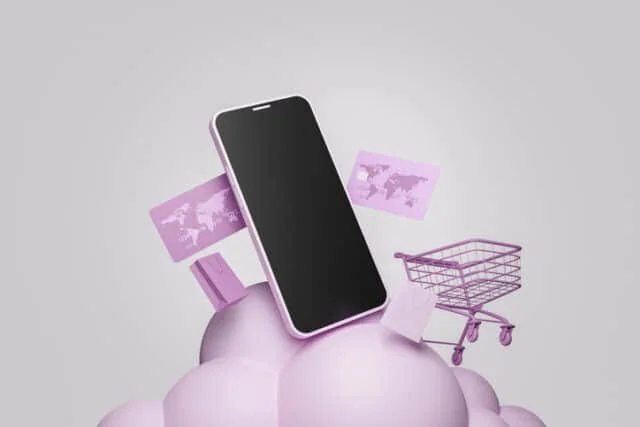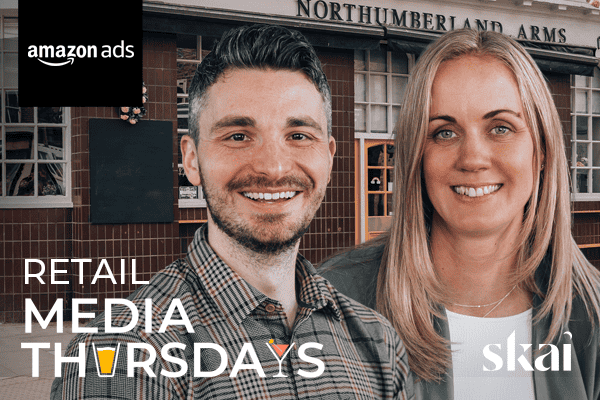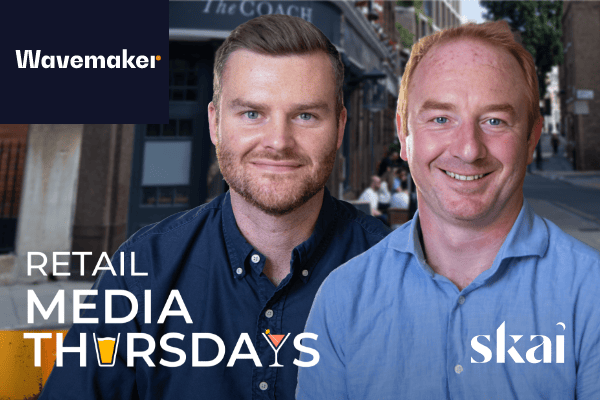Retail media advertising has been a major topic of conversation in the digital marketing world. And for good reason. Due to safety concerns during the pandemic, many shoppers who had never ordered online began using mobile apps for grocery delivery. At this time, retail media advertising became one of the best means of reaching new CPG customers and staying in touch with brand loyalists who might not be able to make it to the store.
But now that many shoppers are venturing back to brick and mortars again, where does that leave retail media advertising in the CPG media plan?
Remember, even if the majority of your sales are transacted, just about every purchase these days is researched online across various retail touchpoints—especially the more expensive ones. CPG marketers are also finding that online retailers are fantastic conversion destinations for their paid search and paid traffic.
Why bring them to your website only to redirect them to an online retail partner a few clicks later?
Today, we answer retail media advertising’s frequently asked questions and explore its diverse media offerings:
What exactly is retail media advertising?
Retail media’s offline predecessor, shopper marketing, offers the closest analogy: reach shoppers as they shop in stores. But, instead of brick and mortar retailers, retail media ads appear within the shopping experience of online retailers such as Amazon, Walmart.com, Target.com, etc.
Although certainly an individual ad channel, retail media advertising should be approached as more of a full-funnel advertising program for online stores. In this regard, it is more like paid social offering a mix of ad formats across the funnel within the walls of a closed ecosystem—i.e., Facebook, Instagram, Snap, Pinterest, etc.
Ads generally come in 2 varieties:
- Sponsored listings within retailer search results
- Display ads (banners, videos) throughout the site
Each retailer offers its own flavor of retail media, with unique advertising capabilities that may include email sponsorships, social media co-op buys, etc.
Why is retail media advertising important for brands and retailers?
Retail media advertising has emerged as a crucial strategy for brands and retailers to engage and convert shoppers across various digital channels. Brands can effectively reach consumers when they are actively browsing products and making purchase decisions by allocating ad spend to targeted placements on retailers’ owned websites, mobile apps, and other digital platforms.
One of the key advantages of retail media advertising is its ability to leverage retailers’ first-party data for precise ad targeting and comprehensive measurement across the entire marketing funnel. This allows brands to establish a direct link between ad exposure and actual sales, providing valuable insights into campaign performance and return on investment. As a result, retail media empowers brands to optimize their advertising efforts and maximize their impact at the digital point of sale.
What are the main types of retail media advertising?
The main types of retail media advertising include sponsored product ads that appear in search results and product detail pages, display ads shown on the retailer’s website and app, and offsite ads that use the retailer’s first-party data to target shoppers on other websites and social media platforms. Onsite ads allow brands to reach in-market shoppers at the digital point of purchase, while offsite ads enable brands to engage consumers across the web. Retail media networks may also offer additional ad formats like video ads, as well as measurement and closed-loop reporting capabilities.
These formats allow brands to connect with consumers digitally, capturing attention and driving sales.
How can brands choose the right mix of retail media advertising formats?
When selecting the appropriate combination of retail media advertising formats, brands should consider the following factors:
- Marketing goals: Determine whether the primary objective is to drive brand awareness, encourage product discovery, or generate direct sales. Different ad formats align with varying stages of the marketing funnel.
- Target audience: Understand the shopping behaviors and preferences of the target audience. Some consumers may be more receptive to sponsored product ads during their search process, while others may engage better with immersive display ads or shoppable media.
- Budget and resources: Assess the available budget and internal resources for creating and managing retail media advertising campaigns. Some formats may require more investment in ad creative or management compared to others.
- Retailer partnerships: Evaluate the retail media advertising options provided by key retailer partners. The specific formats and inventory available may vary across different retailers’ platforms.
Evaluating these factors allows brands to develop a retail media advertising mix that maximizes their return on investment and effectively reaches their target audience at the right moments in their shopping journey.
Does retail media advertising actually work?
Absolutely. With so many shoppers relying on digital channels for everyday purchases, from groceries to home goods, the way consumers browse has changed forever. eMarketer reports that “92.6% of US internet users ages 14 and older, or 84.0% of the US population in that age range, will browse, research or compare products digitally via any device at least once this year, making them digital shoppers.”
However, with so many shoppers changing how they browse, the sheer volume of products they may encounter often becomes overwhelming. Traditionally, consumers’ options have been limited to what a brick and mortar store had in stock on the shelves, but the “digital shelf” is literally endless. This is where those sponsored products come into play, often at the top of searches. Imagine having a sales representative right in the aisle of Target, offering 5-star reviews as evidence that people love your product.
That’s the power of retail media advertising.
How crowded is the retail media advertising market?
Crowded. And getting more so all the time. eMarketer reports that one in eight digital advertising dollars was spent on retail media in 2021. As we move into an increasingly cookie-less world, the first-party data in the possession of huge retailers like Amazon and Walmart is some of the best for brands to segment, target, and even re-target their ideal audiences.
But just because everyone is doing it does not mean there’s no way to stand out in the retail media advertising space. One way to get ahead of the retail media advertising game is to look for smaller retail spaces with room for growth, like GoPuff, InstaCart, and DoorDash. And even if you’re already advertising with Amazon or Walmart, it never hurts to step up your retail media advertising strategy.
How can brands optimize retail media advertising to stand out?
With the retail media advertising space becoming increasingly competitive, brands can take a few approaches to optimize their efforts:
- Look for emerging retail media platforms, such as grocery and food delivery apps, that align with the brand’s target audience but may be less saturated than the major players like Amazon and Walmart.
- Continuously test and refine ad creative, targeting, and placements to improve performance over time, even on the most popular retail media networks. Regularly monitoring results and making adjustments is key.
- Leverage the unique first-party shopping data offered by retail media platforms to segment and target high-value audiences based on purchase behaviors precisely. This capability is a major differentiator for retail media than other digital ad channels.
All it takes is a willingness to explore new opportunities, a commitment to ongoing optimization, and strategic use of purchase data to set a brand’s retail media advertising apart from the competition.
Master retail media advertising with Skai
At Skai, we recognize the difficulties that modern marketers face, such as fragmented data sources, intricate campaign structures, and the relentless pressure to demonstrate a strong return on investment. As part of our intelligent marketing platform, we created our Retail Media solution. Built with best-in-class automation and optimization capabilities, it empowers brands to plan, execute, and measure digital campaigns that meet consumers when and where they shop. You can manage campaigns on 30+ retailers, including Amazon, Walmart, Target, and Instacart, all in one place.
Client results include:
- 461% increase in Amazon Ads ROAS and 57% increase in page traffic for Bondi Sands
- 92% increase in share of voice on Amazon for a Fortune 500 CPG brand
- 72% increase in revenue for VTech
- 1,390% year-over-year sales growth for Kamado Joe
At Skai, we strive to be more than just a vendor; we aim to be a true marketing ally. Our distinctive blend of cutting-edge technology, deep industry knowledge, and forward-thinking creativity empowers you to overcome obstacles, optimize campaign performance, and accomplish your marketing objectives across every channel.
For more information, schedule a brief demo to see all of our cutting-edge functionality for yourself.







